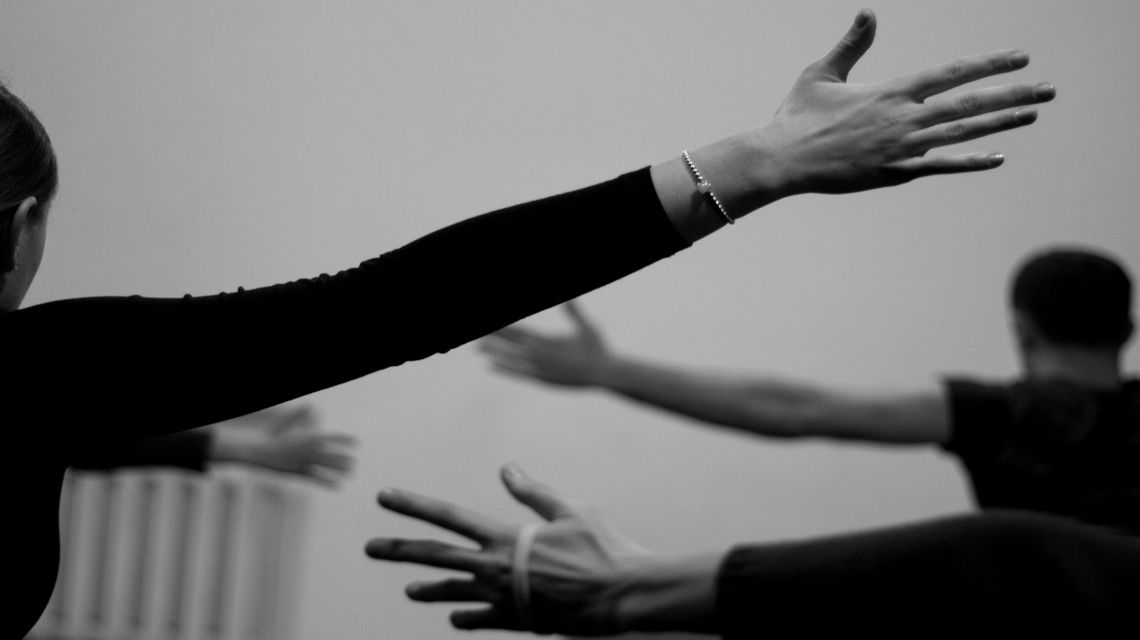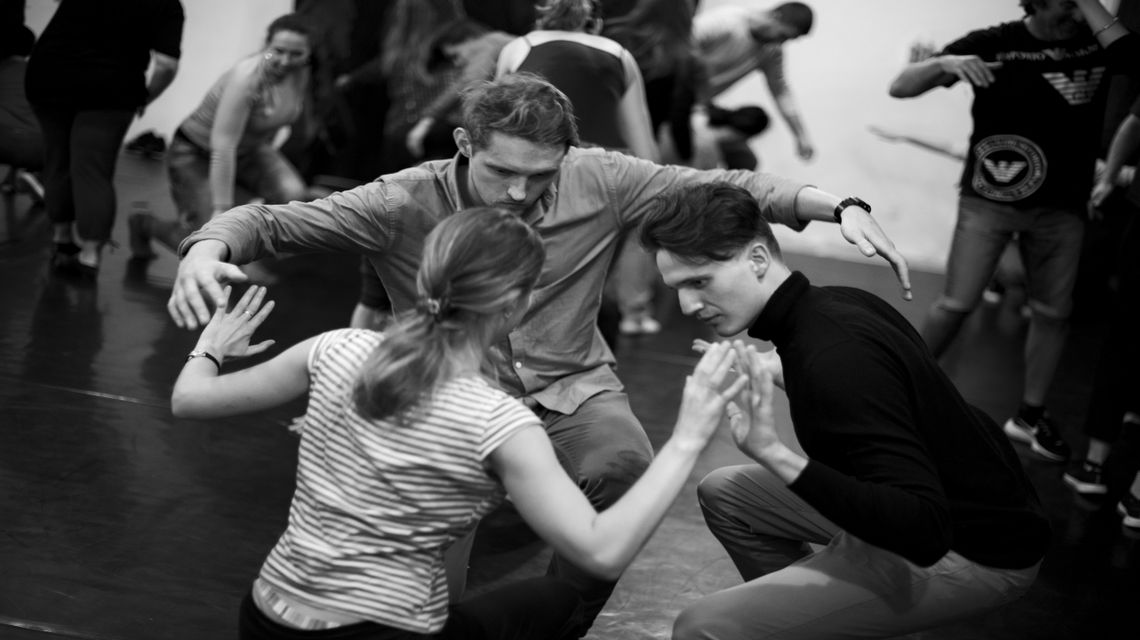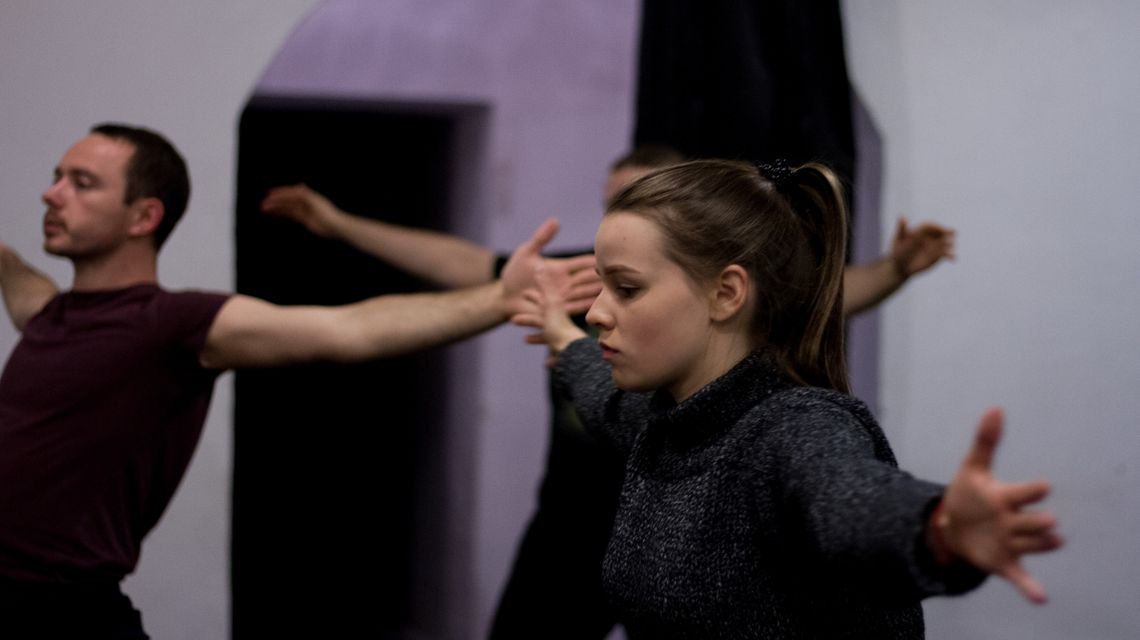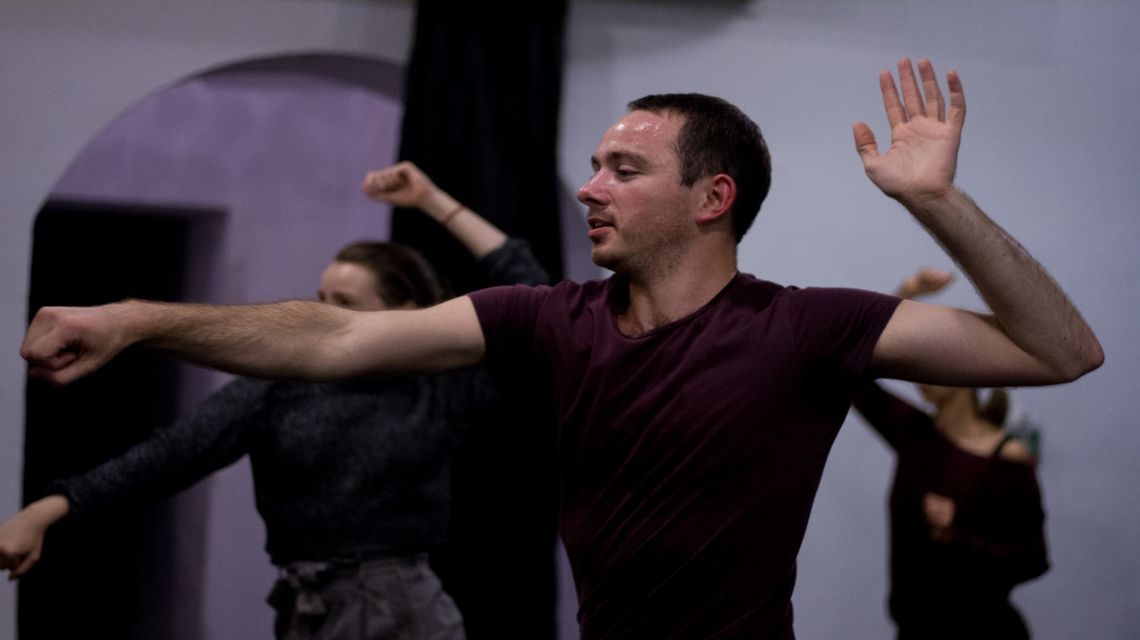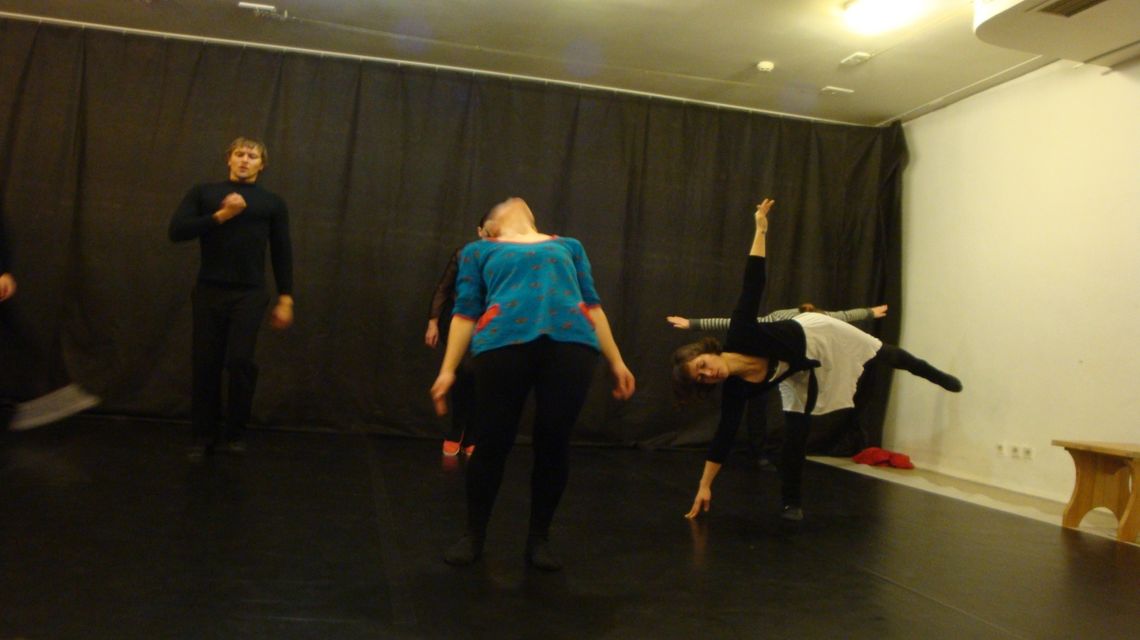Details
Acting Yoga (AY)
for ukrainian text see »Materialien« on the right-hand side
english spoken workshop. Translation into german and ukrainian possible / Workshop in englischer Sprache. Übersetzung ins Deutsche und ins Ukrainische möglich
Kurzbeschreibung auf deutsch:
In diesem Workshop geht es um die Kunst des Menschseins. Um Ausstrahlung, Präsenz und die suggestive Kraft des Erzählens mit und durch den Körper und die ganze Persönlichkeit.
Sie lernen Mittel und Wege kennen, souveräne Manager_innen ihrer eigenen Ausdrucksmöglichkeiten zu werden, Bewusstsein über ihre Mittel zu erlangen (Körperlichkeit, Balance in Bewegung, Atem, Stimme, emotionale Intelligenz) und gleichzeitig dabei die innere Harmonie zu bewahren bzw. zu verbessern.
So erlernen Sie Methoden, mit all dem, was Sie als Persönlichkeit ausmacht, das Publikum zu bewegen und Bilder im Zuschauenden zu erzeugen.
Der Workshop richtet sich an professionelle Spieler_innen und Vermittler_innen in den Darstellenden Künsten aber genauso auch an alle Menschen, die ihre Präsenz in ganzheitlich-humanistischem Sinne intensivieren möchten.
Workshoptext in english:
In our understanding, an actor is someone who elevates human behavior to the level of an art - the art that is capable to impress, the art that is full of images and transformations.
So, in order for the actor to be able to create real impressive images, he/she needs the skills of an expert player and a »cool tool«: He/she must be both a player and an instrument of his/her creative art. In general, we distinguish three hypostases of a real actor.
1. The actual inner actor, as the operator of his own means of expression.
2. The inner dramaturge, as a keeper and »rethinker« of one's own experience of impressions. The one who takes care of the dramaturgical score of acting.
3. The inner director, as the administrator of all behavioral and mental processes.
In order to develop the actor's internal operational skills, our school has developed a special training practice, which was named: the »Acting Yoga« class. Acting Yoga (AY) is an unusual combination of two words in one name: Actor’s action is generally considered to be presentational, demonstrative, extroverted, directed outwards and Yoga with its many meanings: »union«, »unity«, »harmony«, »connection« – is a practice that directs our inner gaze, attention deep inside, into our very human being.
In our opinion, the actor's responsibility is primarily the operational management of one’s own means of expression. It is self-directed leadership, developed personalism and an initiative directed towards one’s self.
The AY training harmonizes and operationally combines various actor’s external manifestations, primarily by bringing behavior out of an automatic, unconscious mode into a conscious, controlled one. Control, in this case, is not an option that narrows, limits or in some way impoverishes the possible variety of manifestations, but »opens the eyes« to the entire system of actor's acting tools in its complex interaction.
AY consists of pantomime, choreographic and statuary corporal practices, combined with breathing, voice and other techniques. AY includes four main parts:
1. Coordination Gymnastic;
2. Body’s Acoustic;
3. Emotional Intelligence in Action (or »Zen of Tension«*);
4. Work in Non-Equilibrium (»Gravitational Sufism«*).
*we use the terms »Yoga«, »Zen«, »Sufism« with respect, not in a religious sense, but only in a utilitarian sense, given their effective semantic value.
Coordination Gymnastic:
Exercises aimed at a transition from automatic movement to the directly controlled one. Development of an operational competence in managing one's own physical processes. Accepting one’s self and one’s own body, as the most valuable object of management. Love and interest to one's own body as to the tool/instrument of self-expression.
Body’s Acoustic:
Breathing and vocal yoga.
Incorporating the sound of the entire human body into vibration. The acoustic nature of sound inside and outside the human body. Good sound relies on proper breathing. Mastering our own interception right in the middle of the breathing-relaxation process - is real breathing yoga. The perfect operation of the sound of vowels in combination with consonants in the entire voice range is a result achieved and maintained by the practice of voice and breathing yoga.
Emotional Intelligence in Action, »Zen of the Tensions«:
We study the connections or correlations of the various emotional states of a person with the »map of tensions« of the body, their dynamics. We learn to fill our movement, our choreography with emotional tension. Tension-relaxation in their dynamic fluidity, turns into an attractive energetic magnetic performance. A practical bonus of working with tensions is a training in drawing one's own attention to different bodily locations and observing them in action and non-action.
Balance. Work in Imbalance. »Gravitational Sufism«:
We always have »next« to us an unpredictable partner, a coach. This partner is gravity. We consciously look for such positions of our body, in which it is difficult to maintain balance/equilibrium. The goal of the training is to find such a choreography, such a movement, which would »prevent« the loss of balance. We play with gravity to find today's »winning tactics« of our movements. This contributes to the discovery of the ability to trust the body to find its own rhythms, patterns, energy of movements. The metaphorization of such work leads to a very interesting practice - spontaneity in plastic improvisation.
AY is a combination of movement and immobility, voice and breathing, tension and relaxation, aimed at the development of internal discipline, orderliness of actions and external expressiveness. AY relieves body and voice clamps, normalizes breathing, returns control of internal tensions, develops coherence of the physical actions, brings the body to a state of productive tone and harmonizes the entire psycho-emotional system of the actor. Each lesson of the AY class is practical, conducted in a training format and has its own independent value as a physical health practice that increases the physical and general somatic culture of a person.
You can learn more about the School of Imagery and our courses at shkobr.com.ua
Members of the GDBA receive a 20% discount. Please indicate your membership number in the registration process.
Dieser Kurs ist mit 16 U.-Std. anerkannt im BuT-zertifizierten Fortbildungsprogramm „Spielleitung im Amateurtheater“
bzw. „Schauspiel im Amateurtheater“
des BDAT im Modul „Schauspiel“,
Lehrinhalt Theaterformen I.
Mitglieder des BDAT erhalten eine Ermäßigung in Höhe von 10%. Bitte tragen Sie im Anmeldeformular im Feld „Institution“ den Namen der Mitgliedsbühne und des Mitgliedsverbands im BDAT ein. Der Rabatt wird Ihnen dann bei Rechnungsstellung gewährt.

